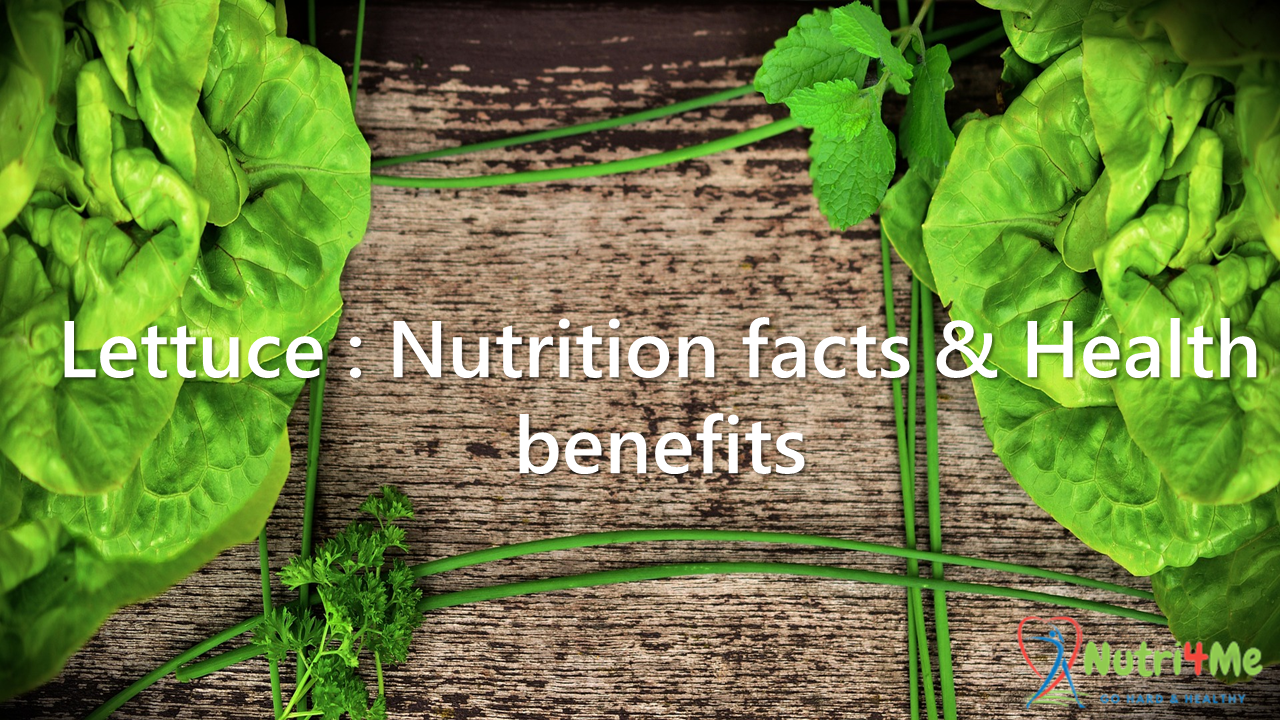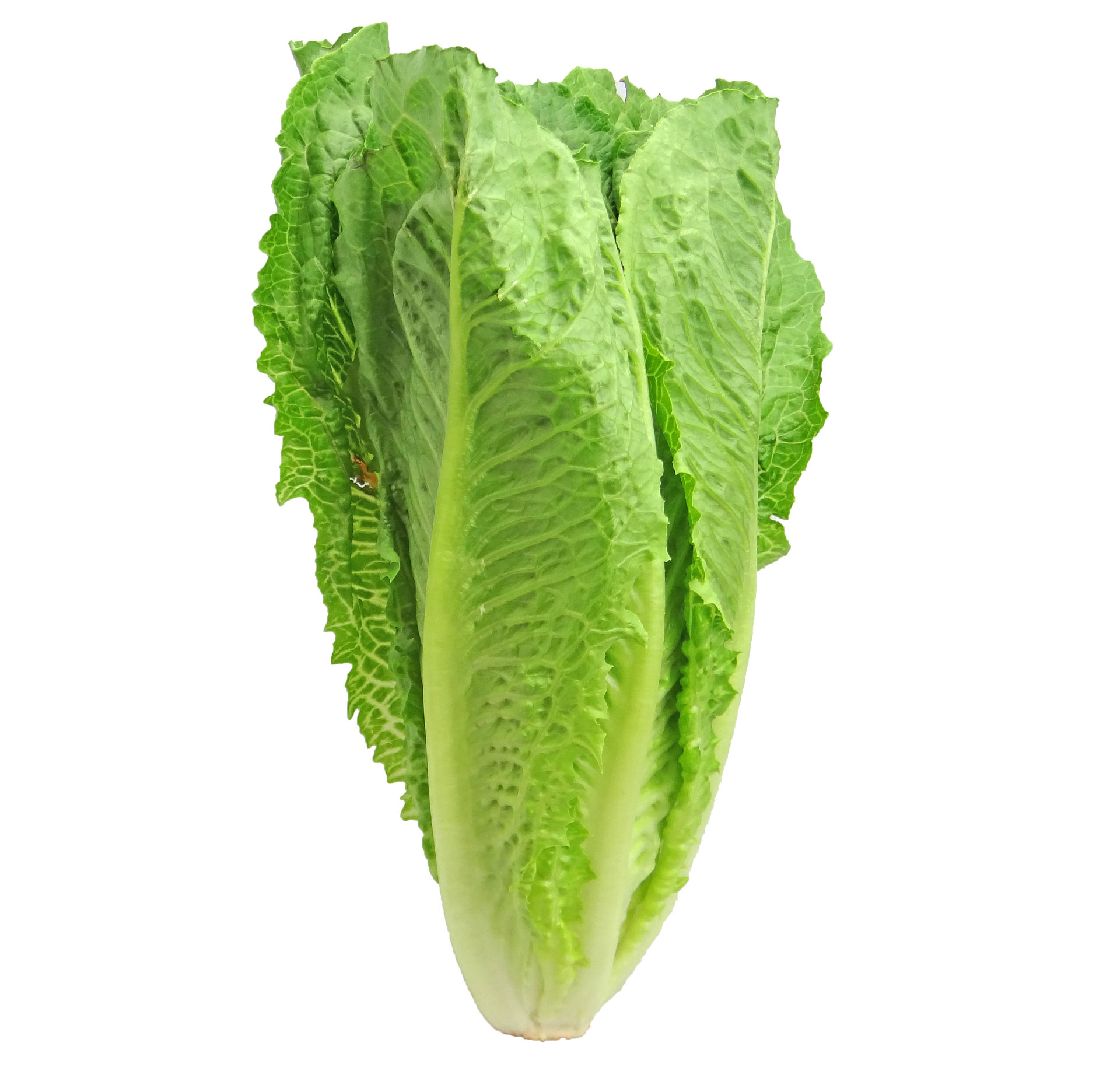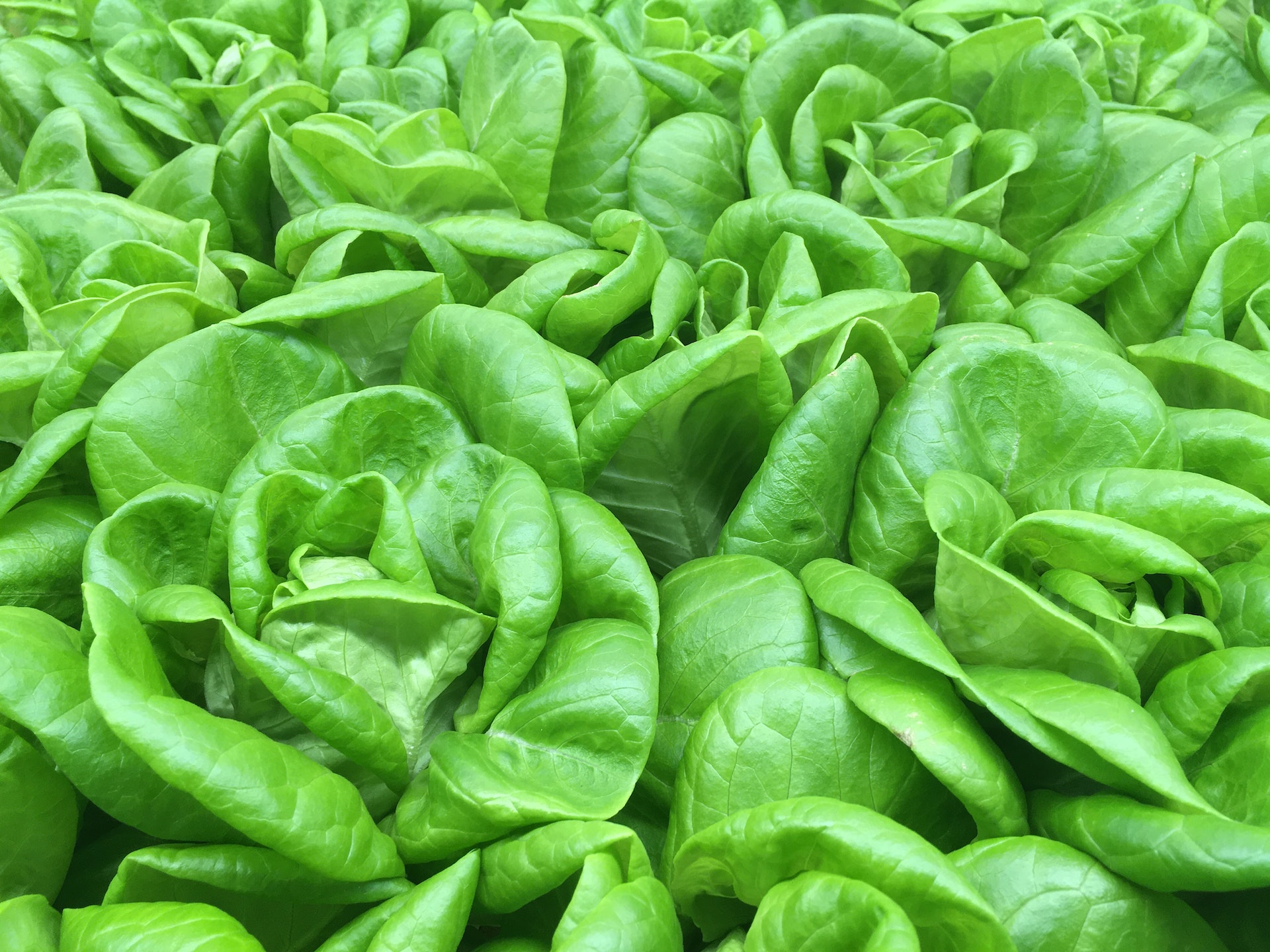Through this article, Nutri4me offers you what lettuce gives us in terms of nutritional facts, health benefits and other information.
What is the origin of lettuce ?
Lettuce (Lactuca sativa) is a plant in the daisy family that is native to the Mediterranean region, It has been cultivated for thousands of years and is one of the oldest known vegetables.
Lettuce was first grown for its edible leaves, which are typically consumed raw in salads or used as a garnish.
Lettuce is thought to have originated in ancient Egypt, where it was grown for its medicinal properties and used in religious ceremonies. It was later introduced to the Greeks and Romans, who valued it for its refreshing and cooling properties and used it in a variety of dishes. Lettuce was also popular in ancient China, where it was used in both medicinal and culinary applications.
Today, lettuce is grown in many parts of the world and is a staple in many cuisines.
Lettuce is thought to have originated in ancient Egypt, where it was grown for its medicinal properties and used in religious ceremonies. It was later introduced to the Greeks and Romans, who valued it for its refreshing and cooling properties and used it in a variety of dishes. Lettuce was also popular in ancient China, where it was used in both medicinal and culinary applications.
Today, lettuce is grown in many parts of the world and is a staple in many cuisines.
There are many different varieties of lettuce, including iceberg, romaine, butterhead, and leaf lettuce, which vary in taste, texture, and appearance.
Iceberg lettuce: Also known as crisphead lettuce, is a type of lettuce with a crunchy texture and a mild, slightly sweet flavor.
It is characterized by its round, pale green head of tightly packed leaves, which are often wrapped in plastic or placed in a container to keep them fresh.
Iceberg lettuce is often used in salads, sandwiches, and as a garnish, but it can also be used in other dishes such as wraps or as a base for dips, it is low in calories and a good source of vitamin K, vitamin A, and potassium.
Romaine lettuce: Also known as Cos lettuce, is a type of lettuce that is characterized by its long, narrow leaves and crunchy texture. It has a slightly bitter and nutty flavor, and is often used in salads, sandwiches, and as a garnish.
It is a good source of vitamin K, vitamin A, and potassium, and also contains small amounts of other vitamins and minerals.
Romaine lettuce is a popular choice for Caesar salads, and is often used in place of iceberg lettuce due to its stronger flavor and nutritional content.
Butterhead lettuce : Is a type of lettuce that is characterized by its soft, buttery texture and mild flavor.
It is a type of head lettuce, which means that it forms a compact head of leaves that are held together by a central stem.
The leaves of butterhead lettuce are typically light to medium green in color and are tender, with a slightly sweet flavor.
Butterhead lettuce is often used in salads and sandwiches, and it can also be used as a base for dips or as a garnish.
It is a good source of vitamin K, vitamin A, and potassium, and also contains small amounts of other vitamins and minerals.
Leaf lettuce: Is a type of lettuce that is characterized by its loose, flat leaves, rather than a compact head like head lettuce, it is also known as loose-leaf lettuce. Leaf lettuce can be green or red in color and has a mild, slightly sweet flavor.
It is often used in salads, sandwiches, and as a garnish, and it can also be used in wraps or as a base for dips. Leaf lettuce is a good source of vitamin K, vitamin A, and potassium, and also contains small amounts of other vitamins and minerals. Some common varieties of leaf lettuce include green leaf lettuce, red leaf lettuce, and oak leaf lettuce.
What is the nutrition value of lettuce ?
Lettuce is a very low-calorie vegetable, with only about 5 calories per cup of shredded lettuce. It is also a good source of several vitamins and minerals, including vitamin K, vitamin A, and vitamin C.
Lettuce is a very low-calorie vegetable, with only about 5 calories per cup of shredded lettuce. It is also a good source of several vitamins and minerals, including vitamin K, vitamin A, and vitamin C.
In addition, lettuce contains small amounts of other nutrients, such as calcium, potassium, and folate. It is also a good source of dietary fiber, which can help to promote healthy digestion and may reduce the risk of certain chronic diseases. Lettuce is a low-fat, low-sugar food that is generally considered to be very healthy.
However, the nutritional content of lettuce can vary depending on the variety and how it is prepared, so it is always a good idea to check the label or consult a nutritionist for more specific information.
What is the health benefits of lettuce ?
There are several potential health benefits associated with consuming lettuce: Lettuce is low in calories and fat, making it a good choice for people who are trying to lose weight or maintain a healthy weight.
It is a good source of several essential vitamins and minerals, including vitamin K, vitamin A, vitamin C, calcium, potassium, and folate. These nutrients are important for maintaining good health and preventing certain diseases.
Lettuce is a good source of dietary fiber, which can help to promote healthy digestion and may reduce the risk of certain chronic diseases such as heart disease and diabetes.
Some studies have suggested that lettuce may have anti-inflammatory properties and may be beneficial for people with certain inflammatory conditions, such as asthma and rheumatoid arthritis.
Lettuce is also a good source of antioxidants, which can help to protect cells from damage caused by free radicals. This may help to reduce the risk of certain types of cancer and other diseases.
It is worth noting that the specific health benefits of lettuce may vary depending on the variety and how it is prepared. As with any food, it is important to consume lettuce as part of a balanced diet and in moderation.
How to store and choose well a lettuce?
Here are some tips for storing and choosing lettuce: To store lettuce, place it in a plastic bag or wrap it in damp paper towels and store it in the refrigerator crisper. This will help to keep it fresh and crisp.
When choosing lettuce, look for heads that are firm and crisp, with no brown or wilted spots.
Avoid lettuce that has a slimy or mushy texture, as this may indicate that it is starting to spoil.
If you are buying pre-packaged lettuce, check the expiration date to make sure it is still fresh.
If you are buying loose lettuce, try to choose heads that are heavy for their size, as this may indicate that they are fresher.
If you are buying lettuce with the roots still attached, such as butter lettuce or red leaf lettuce, make sure the roots are moist and not dried out.
Lettuce is generally more nutritious when it is consumed raw, so try to choose lettuce that is fresh and crisp. If you are using lettuce in a cooked dish, it is still important to choose fresh, high-quality lettuce to ensure that it has the maximum nutritional value.
How to cook and eat lettuce?
There are many ways to cook and eat lettuce:
1. One of the most common ways to eat lettuce is in a salad. To prepare a salad, wash and dry the lettuce, then chop or tear it into bite-sized pieces. You can also add other ingredients such as vegetables, fruits, nuts, and cheese. Dress the salad with a vinaigrette or other dressing of your choice.
2. Lettuce can also be used as a wrap for sandwiches or other fillings. To use lettuce as a wrap, simply place the filling in the center of a lettuce leaf and roll it up like a burrito.
3. Lettuce can be grilled or sauteed as a side dish. To grill lettuce, brush it with oil and grill it over medium-high heat until it is slightly charred and wilted. To saute lettuce, heat oil in a pan and add the lettuce, stirring occasionally until it is wilted.
4. Lettuce can also be used in soups, stews, and other dishes as a garnish or a flavor enhancer.
5. In addition to being cooked, lettuce can also be eaten raw. It can be enjoyed on its own, or added to sandwiches, wraps, and other dishes for added crunch and flavor.
It is important to note that lettuce is generally more nutritious when it is consumed raw, as cooking can destroy some of the nutrients. However, cooking lettuce can also make it more digestible and bring out different flavors, so it can be a good option for some people.
What is the health benefits of lettuce ?
There are several potential health benefits associated with consuming lettuce: Lettuce is low in calories and fat, making it a good choice for people who are trying to lose weight or maintain a healthy weight.
It is a good source of several essential vitamins and minerals, including vitamin K, vitamin A, vitamin C, calcium, potassium, and folate. These nutrients are important for maintaining good health and preventing certain diseases.
Lettuce is a good source of dietary fiber, which can help to promote healthy digestion and may reduce the risk of certain chronic diseases such as heart disease and diabetes.
Some studies have suggested that lettuce may have anti-inflammatory properties and may be beneficial for people with certain inflammatory conditions, such as asthma and rheumatoid arthritis.
Lettuce is also a good source of antioxidants, which can help to protect cells from damage caused by free radicals. This may help to reduce the risk of certain types of cancer and other diseases.
It is worth noting that the specific health benefits of lettuce may vary depending on the variety and how it is prepared. As with any food, it is important to consume lettuce as part of a balanced diet and in moderation.
How to store and choose well a lettuce?
Here are some tips for storing and choosing lettuce: To store lettuce, place it in a plastic bag or wrap it in damp paper towels and store it in the refrigerator crisper. This will help to keep it fresh and crisp.
When choosing lettuce, look for heads that are firm and crisp, with no brown or wilted spots.
Avoid lettuce that has a slimy or mushy texture, as this may indicate that it is starting to spoil.
If you are buying pre-packaged lettuce, check the expiration date to make sure it is still fresh.
If you are buying loose lettuce, try to choose heads that are heavy for their size, as this may indicate that they are fresher.
If you are buying lettuce with the roots still attached, such as butter lettuce or red leaf lettuce, make sure the roots are moist and not dried out.
Lettuce is generally more nutritious when it is consumed raw, so try to choose lettuce that is fresh and crisp. If you are using lettuce in a cooked dish, it is still important to choose fresh, high-quality lettuce to ensure that it has the maximum nutritional value.
How to cook and eat lettuce?
There are many ways to cook and eat lettuce:
1. One of the most common ways to eat lettuce is in a salad. To prepare a salad, wash and dry the lettuce, then chop or tear it into bite-sized pieces. You can also add other ingredients such as vegetables, fruits, nuts, and cheese. Dress the salad with a vinaigrette or other dressing of your choice.
2. Lettuce can also be used as a wrap for sandwiches or other fillings. To use lettuce as a wrap, simply place the filling in the center of a lettuce leaf and roll it up like a burrito.
3. Lettuce can be grilled or sauteed as a side dish. To grill lettuce, brush it with oil and grill it over medium-high heat until it is slightly charred and wilted. To saute lettuce, heat oil in a pan and add the lettuce, stirring occasionally until it is wilted.
4. Lettuce can also be used in soups, stews, and other dishes as a garnish or a flavor enhancer.
5. In addition to being cooked, lettuce can also be eaten raw. It can be enjoyed on its own, or added to sandwiches, wraps, and other dishes for added crunch and flavor.
It is important to note that lettuce is generally more nutritious when it is consumed raw, as cooking can destroy some of the nutrients. However, cooking lettuce can also make it more digestible and bring out different flavors, so it can be a good option for some people.






0 Comments